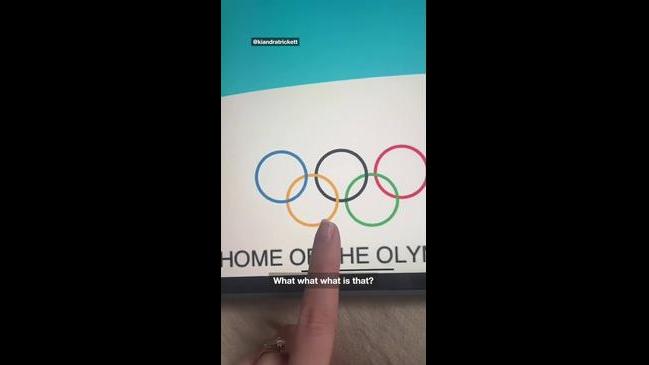In the realm of international sporting events, the Olympic Games stand as a monumental convergence of culture, athleticism, and global unity. Central to this emblematic spectacle is the Olympic Rings logo—an icon of aspiration, competition, and international camaraderie. Yet, looming in the background of this universal symbol is a complex web of legal and ethical considerations regarding its copyright status. The question arises: are the Olympic Rings copyrighted? This inquiry, while seemingly straightforward, unfolds a multifaceted tapestry that intertwines layers of legal frameworks, cultural relativism, and the philosophies underpinning intellectual property.
The Olympic Rings, consisting of five interlocking circles that represent the five inhabited continents of the world—Africa, the Americas, Asia, Europe, and Oceania—establish a visual identity that transcends borders. They were conceived in 1913 by Barón Pierre de Coubertin, a French educator and historian, and have since evolved into the quintessential symbol of the Olympic movement. As symbols do, the Rings embody culturally distinct interpretations and sentiments. Thus, from a cultural relativism perspective, the Rings are not merely a logo; they are a confluence of values, ideologies, and historical narratives shaped by various societies around the globe.
To scrutinize the copyright status of the Olympic Rings requires an understanding of the legal safeguards that undergird emblematic symbols. Under the framework of international copyright law, certain graphic representations can achieve protection if they exhibit sufficient originality and uniqueness. The Olympic Rings, being a distinctive creative work, are indeed copyrighted under various jurisdictions. More specifically, the International Olympic Committee (IOC) rigorously protects this symbol, asserting their rights through a combination of trademark and copyright laws.
In most countries, the Olympic Rings are further protected by trademark law, which provides additional layers of defense against unauthorized use. This is significant, as the international scope of the Olympic movement means that these protections must extend beyond national boundaries. Trademark application has secured the Rings as exclusive identifiers for the IOC, especially during the Games themselves. Our understanding of intellectual property, however, must be juxtaposed with the varying norms and practices of cultural groups. What one society regards as an infringement may not hold the same weight in another, evidence of mankind’s diverse legal and moral landscapes.
Exploration of cultural relativism introduces a nuanced lens through which the status of the Olympic Rings can be examined. Different cultures possess unique understandings of ownership and symbolism. Consider how indigenous communities worldwide might view the appropriation of symbols that represent their heritage, only to observe similar actions on a global scale with the Olympic Rings. This acknowledgment raises questions regarding the universality of copyright and trademark protections. Are such laws truly equitable, or do they favor dominant cultures, enforcing a monocultural narrative that inadequately represents the plurality of human experience?
Furthermore, the rhetoric surrounding the Rings encapsulates ambivalence toward commercialization. As countries pour vast resources into their Olympic delegations, the sanctity of the Rings seems forfeited at times to the corporate entities that exploit this lineage. Sponsorship deals, merchandising, and branding practices often overshadow the Olympic ideals of sport and unity. Thus, though legally protected, the Olympic Rings risk losing their intrinsic value to disparate cultural interpretations and meanings that arise from globalized commercialism.
This disjunction calls for a critical assessment of the effects of cultural relativism in the realm of intellectual property rights. Viewing the Olympic Rings through this lens compels us to consider the implications of copyright as not purely a legal instrument but as a cultural construct that may privilege certain narratives while marginalizing others. Are we not, in essence, wrestling with the tension between the rights of an established organization and the cultural significance ascribed to the symbol by diverse peoples? Such an inquiry provokes thought about how global symbols like the Olympic Rings function in an interconnected yet culturally heterogeneous world.
In evaluating the future trajectory of the Olympic Rings, one may wonder whether the current legal frameworks surrounding copyright and trademark are sustainable or equitable. Cultural relativism suggests that intellectual property laws need to reflect the diversity of global cultural practices, which might lead to calls for reform. Could a more inclusive approach to intellectual property rights potentially create space for the voices of marginalized communities, thus enriching the narrative surrounding the Olympic Rings?
Moreover, the impact of technology on the visibility and accessibility of symbols warrants attention. Digital platforms facilitate the rapid dissemination of images, often blurring the lines between permissible use and infringement. With unprecedented access to cultural symbols, how will the intent and context of their reproduction be interpreted? The explosion of social media has empowered individuals and movements to reinterpret and transform the Rings into symbols of resistance or solidarity, further complicating the question of ownership.
In summation, the multifaceted question of whether the Olympic Rings are copyrighted transcends a mere legal inquiry. Embedded in this query is a tapestry of cultural narratives, societal values, and ethical considerations that reflect our global trajectory. The Rings, while legally protected, provoke a vital discourse on the plurality of meaning, the ethics of representation, and the implications of legal frameworks in a diverse world. Engaging with these ideas not only enriches our understanding of the Olympic symbol but also invites a broader conversation about the nature of cultural representation and the intrinsic value of symbols woven into the human experience.
